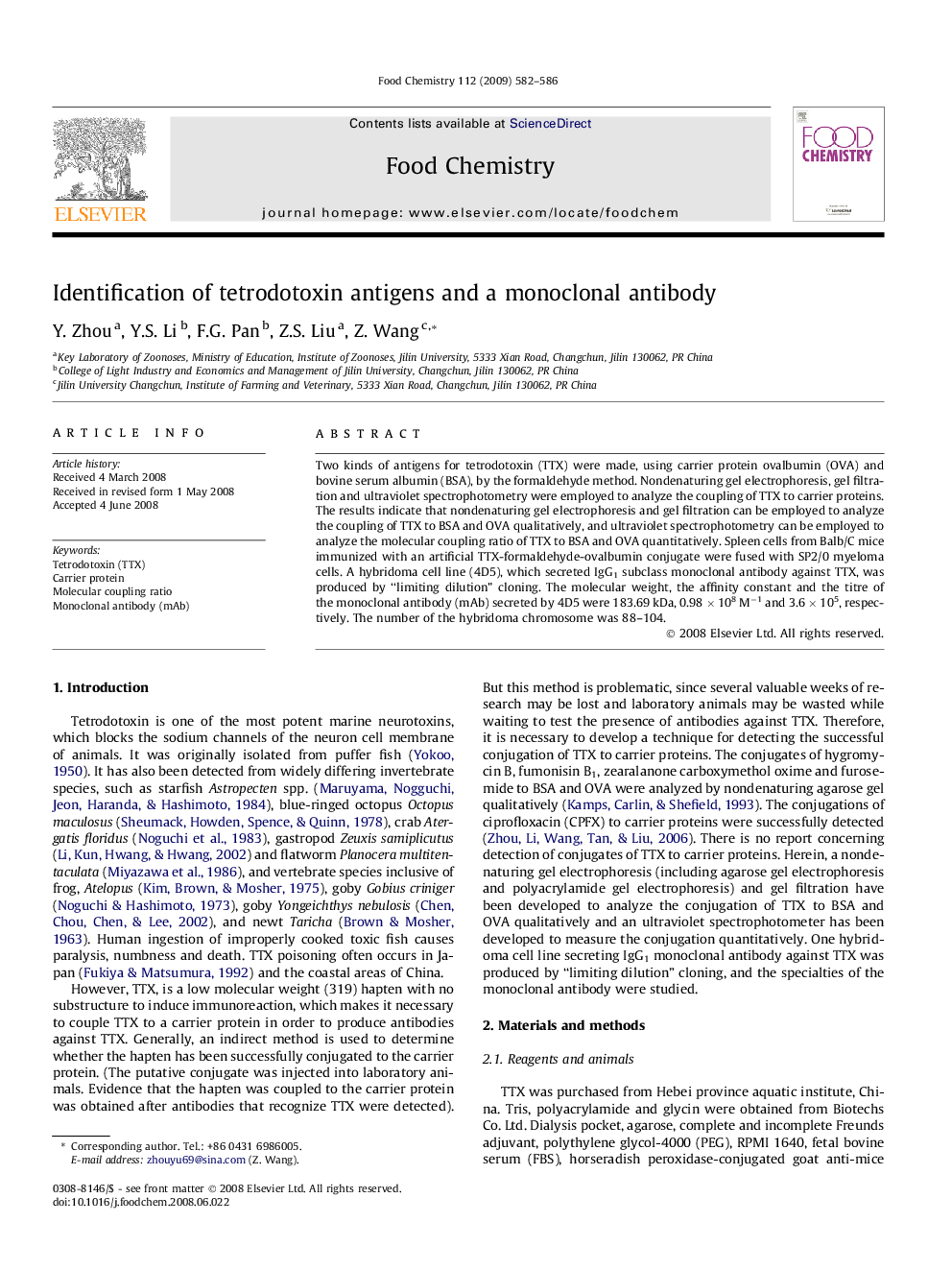| Article ID | Journal | Published Year | Pages | File Type |
|---|---|---|---|---|
| 1189182 | Food Chemistry | 2009 | 5 Pages |
Two kinds of antigens for tetrodotoxin (TTX) were made, using carrier protein ovalbumin (OVA) and bovine serum albumin (BSA), by the formaldehyde method. Nondenaturing gel electrophoresis, gel filtration and ultraviolet spectrophotometry were employed to analyze the coupling of TTX to carrier proteins. The results indicate that nondenaturing gel electrophoresis and gel filtration can be employed to analyze the coupling of TTX to BSA and OVA qualitatively, and ultraviolet spectrophotometry can be employed to analyze the molecular coupling ratio of TTX to BSA and OVA quantitatively. Spleen cells from Balb/C mice immunized with an artificial TTX-formaldehyde-ovalbumin conjugate were fused with SP2/0 myeloma cells. A hybridoma cell line (4D5), which secreted IgG1 subclass monoclonal antibody against TTX, was produced by “limiting dilution” cloning. The molecular weight, the affinity constant and the titre of the monoclonal antibody (mAb) secreted by 4D5 were 183.69 kDa, 0.98 × 108 M−1 and 3.6 × 105, respectively. The number of the hybridoma chromosome was 88–104.
